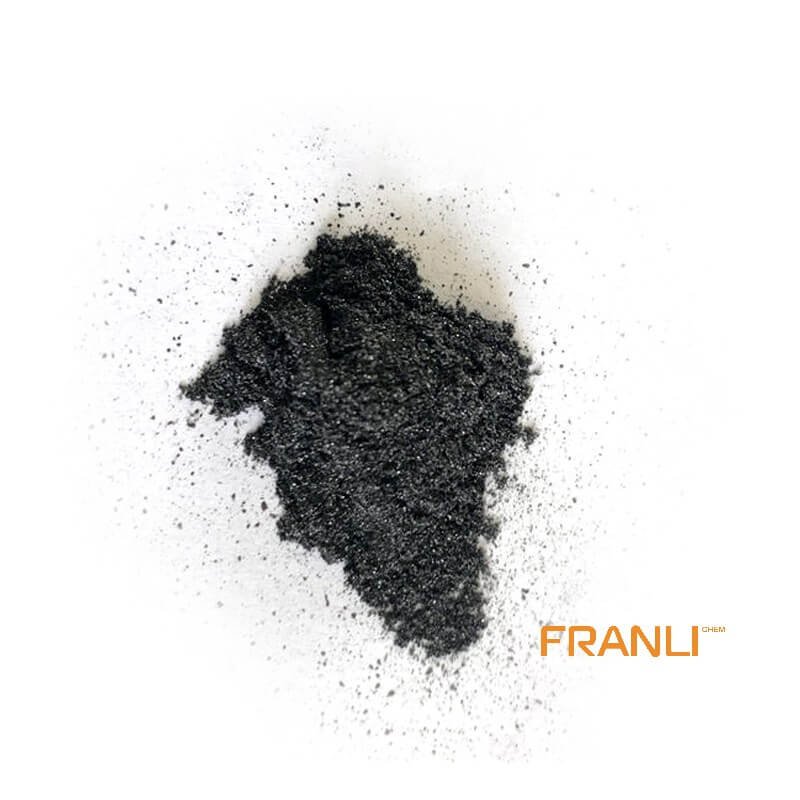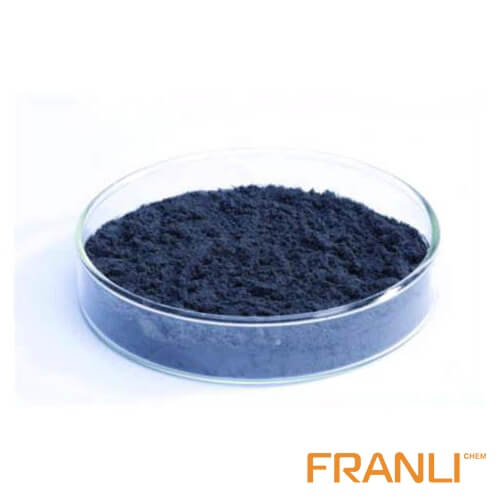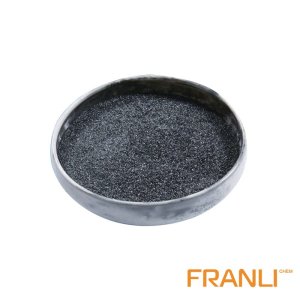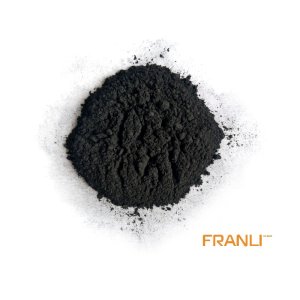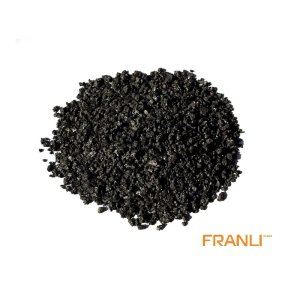Expandable Graphite, refers to the appropriate conditions, acid, alkali metal, salt, and other chemicals can be inserted between Graphite layers, and carbon atoms combined to form a new chemical phase — Graphite Intercalation on Compounds (Graphite Intercalation on Compounds, GIC), This graphite interlaminar compound is expandable graphite. This interlaminar compound, when heated to the right temperature, breaks down instantly and rapidly, producing a large amount of gas that causes the graphite to expand along its axis into a new, worm-like substance called expanded graphite.
Expandable graphite is heated at high temperatures can rapidly expand, expansion ratio as high as dozens of times to hundreds or even thousands of times, after the expansion of the graphite apparent volume up to 250 ~ 300 ml/g or bigger, after expansion of vermicular graphite present, size between zero a few millimeters to a few millimeters, in the internal network with a large number of unique microporous structure, called the expanded graphite or graphite worms. In addition to the excellent properties of natural graphite itself, such as heat and cold resistance, corrosion resistance, and self-lubrication, expanded graphite also has softness, compression resilience, adsorption, ecological environment coordination, biocompatibility, radiation resistance, and other characteristics that natural graphite does not have.
Properties of Expandable Graphite
– Thermal Insulation: When heated, expandable graphite can expand up to 300 times its original volume, forming a lightweight, porous material with excellent thermal insulation properties.
– Fire Resistance: The expansion of expandable graphite creates a protective barrier that can effectively suppress and retard the spread of flames, making it an ideal material for fire-resistant applications.
– Low Thermal Conductivity: The porous structure of expanded graphite exhibits low thermal conductivity, making it suitable for applications requiring thermal insulation and heat management.
– Chemical Resistance: Expandable graphite and its expanded form are highly resistant to chemical attack, making them suitable for use in harsh environments and corrosive conditions.
– Lightweight and Flexible: The expanded form of expandable graphite is lightweight and flexible, allowing for easy incorporation into various materials and products.
Classifications of Expandable Graphite
Expandable graphite can be classified based on various factors, including the intercalation method, expansion ratio, and particle size:
– Intercalation Method: Expandable graphite can be produced through chemical intercalation (e.g., using sulfuric acid or nitric acid) or electrochemical intercalation methods.
– Expansion Ratio: Expandable graphite is classified based on its expansion ratio, which can range from low expansion (20-50 times) to high expansion (200-300 times) upon heating.
– Particle Size: Expandable graphite is available in various particle sizes, ranging from coarse to fine, depending on the intended application and processing requirements.
Production of Expandable Graphite
The production of expandable graphite involves treating natural flake graphite with specific chemical compounds or through an electrochemical process. The production process involves the following key stages:
1. Flake Graphite Selection
The production process begins with the selection of high-quality natural flake graphite with a suitable particle size and purity level. The flake graphite is carefully inspected and prepared for the intercalation process.
2. Intercalation
The intercalation process involves introducing guest molecules or ions between the layers of the graphite structure. This can be achieved through chemical intercalation or electrochemical intercalation methods.
a. Chemical Intercalation: In this method, the flake graphite is treated with strong oxidizing agents, such as sulfuric acid or nitric acid, which intercalate between the graphite layers, forming a graphite intercalation compound.
b. Electrochemical Intercalation: This method involves the electrochemical oxidation of flake graphite in an electrolyte solution, allowing guest ions to intercalate between the graphite layers.
3. Washing and Drying
After the intercalation process, the graphite intercalation compound is thoroughly washed to remove any residual chemicals or electrolytes. The washed material is then carefully dried to remove any remaining moisture.
4. Sizing and Classification
The dried graphite intercalation compound is sized and classified according to particle size and expansion ratio requirements. This step may involve milling, sieving, or air classification techniques to achieve the desired particle size distribution.
5. Packaging and Distribution
The classified expandable graphite is packaged and distributed to various industries for use in a wide range of applications.
Applications of Expandable Graphite
Expandable graphite’s unique properties make it an invaluable material in numerous industries and applications. Here are some of the key areas where expandable graphite plays a crucial role:
1. Fire-Resistant Materials
Expandable graphite is widely used in the production of fire-resistant materials, such as fire-resistant coatings, sealants, and gaskets. When exposed to heat, the expansion of expandable graphite creates a protective barrier that suppresses and retards the spread of flames, making it an essential component in fire safety applications.
2. Thermal Insulation
The lightweight and porous nature of expanded graphite, combined with its low thermal conductivity, makes it an excellent material for thermal insulation applications. It is used in the production of insulation boards, panels, and coatings for buildings, industrial equipment, and transportation systems.
3. Gaskets and Sealing Materials
Expandable graphite is used in the production of gaskets and sealing materials for high-temperature and corrosive environments. The expansion of graphite creates a tight seal that can withstand extreme conditions, making it suitable for applications in the automotive, aerospace, and chemical industries.
4. Conductive Materials
Despite its insulating properties, expandable graphite can be used to produce conductive materials by incorporating it into polymer matrices or coatings. These materials find applications in electromagnetic shielding, static dissipation, and conductive adhesives.
5. Friction Materials
The lubricating properties of expandable graphite make it a valuable component in friction materials, such as brake linings and clutch facings. The expansion of graphite during braking helps dissipate heat and reduce wear, improving the performance and durability of these components.
6. Environmental Applications
Expandable graphite is used in various environmental applications, such as water treatment, soil remediation, and air purification. Its porous structure and chemical resistance make it effective in adsorbing and removing contaminants from various media.
Expandable graphite is a remarkable and versatile material that has found applications across a wide range of industries, from fire-resistant materials and thermal insulation to conductive composites and environmental remediation. Its unique properties, including thermal insulation, fire resistance, chemical resistance, and lightweight nature, make it an indispensable material in modern technology.

